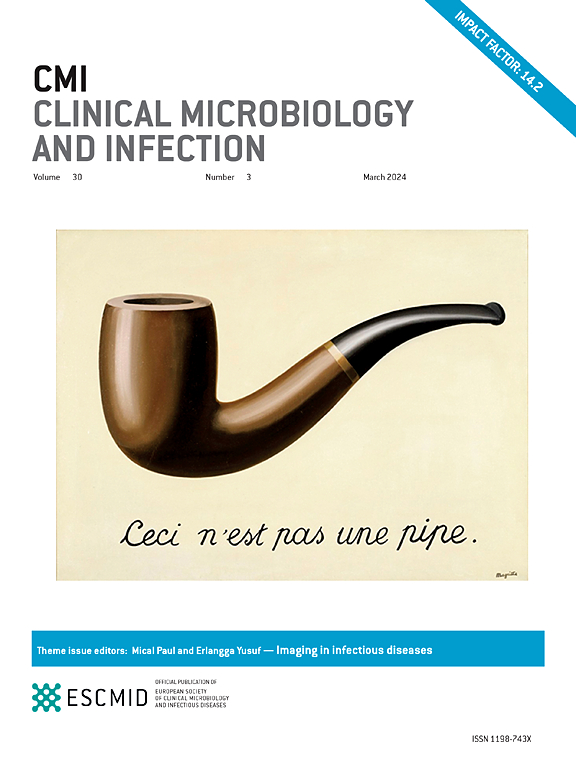The multifaceted nature of lack of access to antibiotics: types of shortage and specific causes, consequences, and solutions
IF 10.9
1区 医学
Q1 INFECTIOUS DISEASES
引用次数: 0
Abstract
Background
Maintaining access to a broad range of old and new antibiotics is increasingly difficult due to supply, market, and demand issues. Next to immediate negative consequences for individual patients and healthcare systems, antibiotic unavailability can accelerate resistance development due to unmotivated use of suboptimal broad-spectrum antibiotics.
Objectives
Although academics and policymakers agree that lack of access to antibiotics is a major public challenge, there are widely different situations of lack of access that are not always clearly identified. Therefore, this paper aims to clarify potential confusion by delving into four different types of lack of access, their specific causes, consequences, and potential solutions.
Sources
The paper builds on a narrative review of academic and policy literature about lack of access to antibiotics and potential solutions to address it.
Content
We discuss causes as well as economic and clinical consequences of four different types of antibiotic unavailability: short-term shortages, long-term shortages, deregistrations, and lack of registration. The discussion is supported by examples from Norway, Romania, and Ethiopia, three countries characterized by clearly different market sizes and ability to pay. Common causes for all types of lack access include unattractive markets, dependence on few suppliers and insufficient communication, whereas other causes are specific to one type (e.g. insufficient inventories cause short-term shortages or regulatory complexity hinders registration). Longer lack of access entails more serious clinical consequences and higher risk of resistance development, but may not correspondingly increase costs in the long-term if alternatives are identified.
Implications
It is essential to understand the type of unavailability at hand because no single solution can address all types. For instance, stockpiling addresses short-term shortages, but not long-term ones or deregistrations. However, supply chain transparency and pooled procurement are remedies that support other solutions and can cope with several types of lack of access.
无法获得抗生素的多面性:短缺类型和具体原因、后果及解决方案。
背景:由于供应、市场和需求等方面的问题,维持对各种新旧抗生素的使用越来越困难。除了会对患者和医疗系统造成直接的负面影响外,抗生素的不可获得性还会加速抗药性的产生,因为人们会无意识地使用次优的广谱抗生素:尽管学术界和政策制定者都认为抗生素的缺乏是一项重大的公共挑战,但缺乏抗生素的情况千差万别,并不总是能清晰地识别出来。因此,本文旨在通过深入研究四种不同类型的抗生素缺乏情况、其具体原因、后果和潜在解决方案,澄清可能存在的混淆:资料来源:本文基于对有关缺乏抗生素获取途径及潜在解决方案的学术和政策文献的叙述性回顾:我们讨论了四种不同类型的抗生素缺乏的原因以及经济和临床后果:短期短缺、长期短缺、取消注册和缺乏注册。挪威、罗马尼亚和埃塞俄比亚这三个国家的市场规模和支付能力明显不同,我们通过这三个国家的实例来支持讨论。所有类型缺乏准入的共同原因包括市场缺乏吸引力、依赖少数供应商和沟通不足,而其他原因则是某一类型所特有的(例如,库存不足导致短期短缺或监管复杂性阻碍了注册)。长期无法获得药物会造成更严重的临床后果,产生抗药性的风险也更高,但如果找到了替代品,长期而言成本可能不会相应增加:必须了解当前无法获得药物的类型,因为没有任何一种解决方案可以解决所有类型的问题。例如,储备可以解决短期短缺问题,但不能解决长期短缺或取消注册问题。然而,供应链透明度和集中采购是支持其他解决方案的补救措施,可以应对多种类型的无法获取问题。
本文章由计算机程序翻译,如有差异,请以英文原文为准。
求助全文
约1分钟内获得全文
求助全文
来源期刊
CiteScore
25.30
自引率
2.10%
发文量
441
审稿时长
2-4 weeks
期刊介绍:
Clinical Microbiology and Infection (CMI) is a monthly journal published by the European Society of Clinical Microbiology and Infectious Diseases. It focuses on peer-reviewed papers covering basic and applied research in microbiology, infectious diseases, virology, parasitology, immunology, and epidemiology as they relate to therapy and diagnostics.

 求助内容:
求助内容: 应助结果提醒方式:
应助结果提醒方式:


